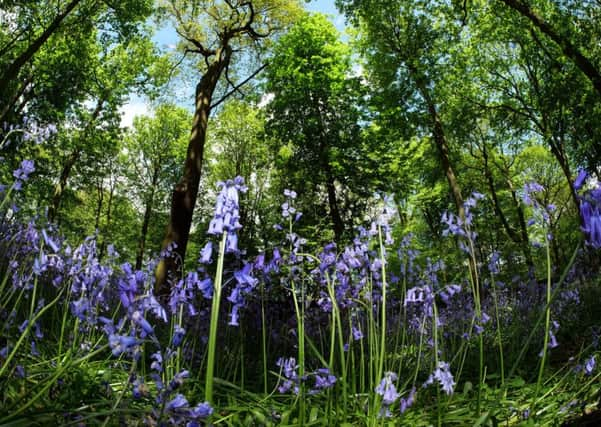Spanish threat to native bluebell - and where best to see displays in Yorkshire


Their annual appearance is something I have stopped taking for granted since the prolonged cold spell which gripped the UK in March and April of 2013. I remember getting to the first of May without seeing a single bluebell in flower, like some sci-fi film in which we were deprived of spring altogether. Thankfully, the first bout of warm weather saw them shoot out of the ground and the average date for flowering bluebells in the UK that year was, astonishingly, the fifth of May.
Last year and 2013 were blips in a process which is seeing springtime events in nature creep ever forward. Bluebells now appear an average of five days earlier than they did half a century ago according to the Woodland Trust, a trend that it attributes to global warming.
Advertisement
Hide AdAdvertisement
Hide AdThe flower that forms our most specular woodland displays in spring is known as the British bluebell, Hyacinthoides non-scripta, but can be confused with another species, the Spanish bluebell Hyacinthoides hispanica, which was introduced to British gardens in the 17th century.
To complicate matters further, there is a hybrid of our native flower and the Spanish bluebell, Hyacinthoides x massartiana, which was first identified in the wild in 1963.
But how do you tell them apart? Even the Woodland Trust admits it’s “not that straightforward”, particularly from a distance. The best way is to look at the flowers close-up, although even some differences are not a reliable guide. For example, the British bluebell’s pollen is creamy-white, and while the hybrid’s pollen is usually green or blue it is sometimes white or cream.
A more reliable method is to look at how the flowers grow. All you need to know about the Spanish variant is that its bells grow all round the stem whereas the British bluebell’s flowers are just on one side. That is what gives them their distinctive droop. Worryingly, Spanish and hybrid bluebells have been increasing in the wild.
Advertisement
Hide AdAdvertisement
Hide AdI see more white bluebells than ever these days, most recently growing in the sun-dappled shade of a woodland edge in Wharfedale last year. These are usually an albino variant of the Spanish bluebell, since white British bluebells are rare.
Not surprisingly, the symbol of the Botanical Society of the British Isles is the bluebell, and it always tops the poll whenever the nation is asked to name its favourite wildflower.
To experience our native bluebells at their best in Yorkshire this spring head for Hackfall Wood near Masham, Middleton Woods at Ilkley, North Cliffe Wood near Market Weighton, Nostell Priory outside Wakefield and Bitholmes Wood near Stocksbridge in South Yorkshire.